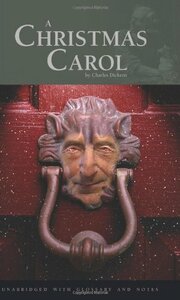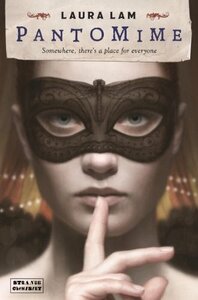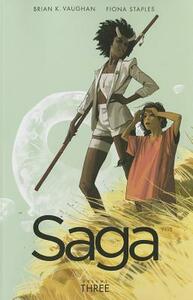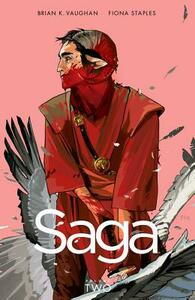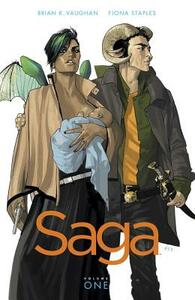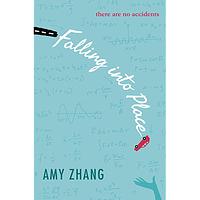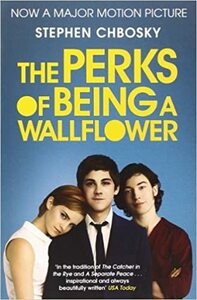Take a photo of a barcode or cover
patchworkbunny's Reviews (2.12k)
Micah has a secret. He didn’t run away to join the circus but when he finds himself stood inside the big tent, he knows that’s what he wants to do. He has already left everything he knew behind and cannot go back. On the flip-side, Gene is the daughter of a noble family, destined to be paraded at debutante balls and married off to a deserving suitor. She would much rather be climbing trees with the boys than dancing but her mother is determined for her to be a nice normal girl.
The world encased within Pantomime is not far removed from the heyday of the circus in the real world. The glamour, glitz and seduction of the big tent is there; an attraction that would not fail to pull crowds at any city or town. The freak show, with a few exceptions, would not be out of place in any 19th century sideshow. The atmosphere of R.H. Ragona’s Circus of Magic is everything that I have been missing in other circus reads of late. Because I really do love a book set in the circus.
It is however a fantasy novel, set in Ellada. The world is reminiscent of steampunk without any overt characteristics. It has elements of both the past, with class structure and society of the past, and the future, where artefacts of a world lost litter the pages. The purpose of the Plenglass domes is unknown to the inhabitants and they are treated with a certain fear and respect. The Vestige is the name given to artefacts which move by magic, but the magic is in short supply. There’s a bit of me that wondered if the magic was electricity or if this was just an analogy. I do get the feeling that the fantasy element will play a bigger part in the sequel as this was all about Micah and Gene.
Pantomime is a difficult book to review without revealing the secret. It didn’t take me long to have my suspicions; the split timeline gives enough hints and the environment it is set in allows the brain to wander there. Fortunately, you don’t need to wait until the end and the majority of the story revolves around if it will be revealed to other characters and what their reactions may be. It’s something that will shock some readers but it’s not used gratuitously; it’s all about acceptance.
It’s a brave book and one that deserves to be read by a wide audience. I hope it will readjust some people’s prejudices; to make them stop and think that we are all human beings with feelings and some things we just can’t help. It’s a refreshing take on running away to join the circus…and other things that I really can’t tell you about.
The world encased within Pantomime is not far removed from the heyday of the circus in the real world. The glamour, glitz and seduction of the big tent is there; an attraction that would not fail to pull crowds at any city or town. The freak show, with a few exceptions, would not be out of place in any 19th century sideshow. The atmosphere of R.H. Ragona’s Circus of Magic is everything that I have been missing in other circus reads of late. Because I really do love a book set in the circus.
It is however a fantasy novel, set in Ellada. The world is reminiscent of steampunk without any overt characteristics. It has elements of both the past, with class structure and society of the past, and the future, where artefacts of a world lost litter the pages. The purpose of the Plenglass domes is unknown to the inhabitants and they are treated with a certain fear and respect. The Vestige is the name given to artefacts which move by magic, but the magic is in short supply. There’s a bit of me that wondered if the magic was electricity or if this was just an analogy. I do get the feeling that the fantasy element will play a bigger part in the sequel as this was all about Micah and Gene.
Pantomime is a difficult book to review without revealing the secret. It didn’t take me long to have my suspicions; the split timeline gives enough hints and the environment it is set in allows the brain to wander there. Fortunately, you don’t need to wait until the end and the majority of the story revolves around if it will be revealed to other characters and what their reactions may be. It’s something that will shock some readers but it’s not used gratuitously; it’s all about acceptance.
It’s a brave book and one that deserves to be read by a wide audience. I hope it will readjust some people’s prejudices; to make them stop and think that we are all human beings with feelings and some things we just can’t help. It’s a refreshing take on running away to join the circus…and other things that I really can’t tell you about.
It’s been four months since Mater Viae passed through from London-Under-Glass and claimed her throne. In those four months, the city has sickened and its occupants divided. London is on the brink of a civil war like no other.
If you’ve not experienced Tom Pollock’s London yet, go and get yourself a copy of The City’s Son right this minute. The third book does not disappoint at all and I can’t remember the last time a trilogy has delivered so well in every single book.
From the opening pages, the streets are closing in, literally as windows and doors are disappearing, leaving nothing but brickwork and the fading screams of those trapped inside. The outlook seems bleak for both the city and Beth, who now must feed off sickly streets. Loyalties are divided and refugees are camping out in Selfridges, one of the last safe havens from a city that is slowly consuming itself.
Tom’s characters don’t come out of their adventures unscathed. It’s not just their inner selves that are transformed, but when bad things happen in this world, they also have physical impact. Pen still holds her scars from the Wire Mistress (who you can expect to see more from in this book) and has another chance to address her internal scars. Beth’s transformation is more fantastical, but comes with many new challenges.
And there’s loss. Not just of the city they call home, the streets lost to a malignance, but also to those they hold dear. Beth visits the baby Pavement Priest that is all that is physically left of Fil and she carries his stolen memories in a flask. Pen learns how her parents, who no longer remember her, think they are going insane. This is a world of tough decisions, unknowns and living with the consequences.
There’s a nod to some of the creatures from the past, some who side with them and others that see the Mirror Mater as their true Goddess. Alliances are shifting, and not always in the direction that you expect. It feels a much more familiar world by now, less of a learning curve getting to know Tom’s stunning world-building.
The ending is dramatic and emotional. I was so thrown by one bit with the cats, where I was thinking aww, isn’t that lovely, only for the scene to pan out and be something else. It really manages to play with your heartstrings if you’ve come to love this world and the characters.
I’m not sure I was ready for it to end. Pitched as a trilogy, Our Lady of the Streets does feel like a conclusion but this world is so multi-layered and creative, it’s going to be hard to let go. Despite the hardships, I was left with a feeling of hope; that something will live on beyond the pages. Beth and Pen, the Railwraiths, London-Under-Glass, the Pavement Priests and Gutterglass are so real to me that they can’t stop existing, in the corners of our imaginations and in the bricks of London Town…
Review copy provided by publishe
If you’ve not experienced Tom Pollock’s London yet, go and get yourself a copy of The City’s Son right this minute. The third book does not disappoint at all and I can’t remember the last time a trilogy has delivered so well in every single book.
From the opening pages, the streets are closing in, literally as windows and doors are disappearing, leaving nothing but brickwork and the fading screams of those trapped inside. The outlook seems bleak for both the city and Beth, who now must feed off sickly streets. Loyalties are divided and refugees are camping out in Selfridges, one of the last safe havens from a city that is slowly consuming itself.
Tom’s characters don’t come out of their adventures unscathed. It’s not just their inner selves that are transformed, but when bad things happen in this world, they also have physical impact. Pen still holds her scars from the Wire Mistress (who you can expect to see more from in this book) and has another chance to address her internal scars. Beth’s transformation is more fantastical, but comes with many new challenges.
And there’s loss. Not just of the city they call home, the streets lost to a malignance, but also to those they hold dear. Beth visits the baby Pavement Priest that is all that is physically left of Fil and she carries his stolen memories in a flask. Pen learns how her parents, who no longer remember her, think they are going insane. This is a world of tough decisions, unknowns and living with the consequences.
There’s a nod to some of the creatures from the past, some who side with them and others that see the Mirror Mater as their true Goddess. Alliances are shifting, and not always in the direction that you expect. It feels a much more familiar world by now, less of a learning curve getting to know Tom’s stunning world-building.
The ending is dramatic and emotional. I was so thrown by one bit with the cats, where I was thinking aww, isn’t that lovely, only for the scene to pan out and be something else. It really manages to play with your heartstrings if you’ve come to love this world and the characters.
I’m not sure I was ready for it to end. Pitched as a trilogy, Our Lady of the Streets does feel like a conclusion but this world is so multi-layered and creative, it’s going to be hard to let go. Despite the hardships, I was left with a feeling of hope; that something will live on beyond the pages. Beth and Pen, the Railwraiths, London-Under-Glass, the Pavement Priests and Gutterglass are so real to me that they can’t stop existing, in the corners of our imaginations and in the bricks of London Town…
Review copy provided by publishe
I got the first two volumes of Saga via a Humble Bundle. I’d heard murmurings of approval before this and it was the main reason I got the comic bundle. I was not disappointed.
I loved the humour and sarcasm. Baby Hazel sort of narrates (she’s telling the story in hindsight, don’t worry). There’s the trials of looking after a baby whilst on the run. I liked that the bounty hunters are 3 dimensional. It might start off with a job for money but ten there is a moral drive to get that money. I also want a Lying Cat. He looks a bit like a very large Devon Rex and will point out whenever someone is lying.
Stunning artwork too. I loved all the different creatures and races. If you’re offended by drawn genitalia, you might want to avoid. There’s not a lot, but there is some. Plus Sextillion is an alien brothel and its occupants aren't skimmed over.
I loved the humour and sarcasm. Baby Hazel sort of narrates (she’s telling the story in hindsight, don’t worry). There’s the trials of looking after a baby whilst on the run. I liked that the bounty hunters are 3 dimensional. It might start off with a job for money but ten there is a moral drive to get that money. I also want a Lying Cat. He looks a bit like a very large Devon Rex and will point out whenever someone is lying.
Stunning artwork too. I loved all the different creatures and races. If you’re offended by drawn genitalia, you might want to avoid. There’s not a lot, but there is some. Plus Sextillion is an alien brothel and its occupants aren't skimmed over.
Laureth Peak is heading to New York, with her little brother Benjamin. She borrowed her mum’s credit card to pay for the flights and told Benjamin they’re off to visit their dad. Which isn’t entirely a lie. Their dad has gone missing and Laureth needs to find him, but she just couldn’t go by herself. Her only clue is one of her dad’s notebooks, found by a stranger, containing the notes for THAT book.
She Is Not Invisible is an absolutely wonderful book. Blindness isn’t Laureth’s defining feature. I picked up the book not knowing anything about it and I slowly came to realise that she is blind through some of her actions rather that it being blatant. The first thing we learn is she’s abducting her little brother and getting on a plane. It’s not a story about blindness, it’s a story about a girl looking for her dad who happens to be blind. Saying that, it does a fantastic job of relaying what everyday life is like for her and the things most of us take for granted.
At first I thought it was a little overdone and unbelievable that everything Benjamin touches would break, but as we read about her dad’s research into coincidence, it becomes more relevant. There are “extracts” from her dad’s notebook that contains his research for his book. It explains that Pauli started looking at synchronicity just because he had these weird coincidences (breaking experiments), which became known as Pauli’s syndrome. As a side note, my mum always said she broke electronic items (I think it wore off after she discovered eBay).
So there’s two aspects to this book, one is Laureth and Benjamin’s sometimes perilous journey around New York, and the increasing worry about their dad’s fate. It’s full of warmth and humour and a dash of tension. Then there’s all the stuff about coincidence which is thought-provoking. And when you get to the end, don’t skip the tiny bit of advice, it will make you smile.
This was my first book by Marcus Sedgwick but I have a few others on my TBR. He’s certainly an author I look forward to reading more of.
She Is Not Invisible is an absolutely wonderful book. Blindness isn’t Laureth’s defining feature. I picked up the book not knowing anything about it and I slowly came to realise that she is blind through some of her actions rather that it being blatant. The first thing we learn is she’s abducting her little brother and getting on a plane. It’s not a story about blindness, it’s a story about a girl looking for her dad who happens to be blind. Saying that, it does a fantastic job of relaying what everyday life is like for her and the things most of us take for granted.
At first I thought it was a little overdone and unbelievable that everything Benjamin touches would break, but as we read about her dad’s research into coincidence, it becomes more relevant. There are “extracts” from her dad’s notebook that contains his research for his book. It explains that Pauli started looking at synchronicity just because he had these weird coincidences (breaking experiments), which became known as Pauli’s syndrome. As a side note, my mum always said she broke electronic items (I think it wore off after she discovered eBay).
So there’s two aspects to this book, one is Laureth and Benjamin’s sometimes perilous journey around New York, and the increasing worry about their dad’s fate. It’s full of warmth and humour and a dash of tension. Then there’s all the stuff about coincidence which is thought-provoking. And when you get to the end, don’t skip the tiny bit of advice, it will make you smile.
This was my first book by Marcus Sedgwick but I have a few others on my TBR. He’s certainly an author I look forward to reading more of.
Such a wonderfully written book on how appearances can be deceiving and the struggles of spending your life fitting in rather than just being who you want to be. Full review to follow.
Charlie is starting high school, not long after the death of his friend, Michael. Charlie is a wallflower, observing school life from the outskirts. When his advanced English teacher tells him to participate in life, things start to change and Charlie starts to live. Forming friendships and learning about girls; standing up for others and coming to terms with everything good and bad that has happened in his short life.
The Perks of Being a Wallflower is a collection of first experiences, told in letter form through the eyes of an intelligent yet lonely boy. In short, it is just brilliant. From page to page, emotions go from high to low. Yet the actions are nothing dramatic, this is purely the life that many go through at school. Charlie isn’t explicit in explaining his emotions, which makes it all the more heart-breaking when he writes something which indicates how lonely or depressed he is. As an adult, we understand, as a confused teenager, he can’t quite grasp what he’s feeling.
But for all the heart breaks there is happiness and humour. Warm and touching, you should definitely read the book before going to see the film. Though I am late to the party and Perks is already a cult classic, deservedly so.
The early nineties really do feel like a different era! A world without internet and mobile phones; where a mix tape is a true definition of friendship. I’m not sure Perks would be quite so convincing in the present day. Charlie’s voice is a little too young and naïve as a 15/16 year-old by today’s standards. They definitely don’t need sex explaining to them at that age now but back then, information was a lot more restricted and it works in an historical way. I can’t believe I’m saying 1991 counts as a historical setting but seriously, so much has changed!
The Perks of Being a Wallflower is a collection of first experiences, told in letter form through the eyes of an intelligent yet lonely boy. In short, it is just brilliant. From page to page, emotions go from high to low. Yet the actions are nothing dramatic, this is purely the life that many go through at school. Charlie isn’t explicit in explaining his emotions, which makes it all the more heart-breaking when he writes something which indicates how lonely or depressed he is. As an adult, we understand, as a confused teenager, he can’t quite grasp what he’s feeling.
But for all the heart breaks there is happiness and humour. Warm and touching, you should definitely read the book before going to see the film. Though I am late to the party and Perks is already a cult classic, deservedly so.
The early nineties really do feel like a different era! A world without internet and mobile phones; where a mix tape is a true definition of friendship. I’m not sure Perks would be quite so convincing in the present day. Charlie’s voice is a little too young and naïve as a 15/16 year-old by today’s standards. They definitely don’t need sex explaining to them at that age now but back then, information was a lot more restricted and it works in an historical way. I can’t believe I’m saying 1991 counts as a historical setting but seriously, so much has changed!
